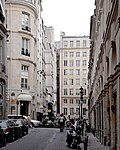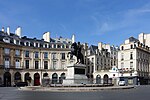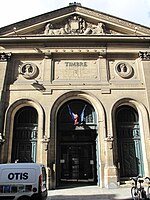Rue Radziwill
Streets in the 1st arrondissement of Paris

The Rue Radziwill is a street in the 1st arrondissement of Paris. It starts at 1 rue des Petits-Champs and ends in a dead end. It was named after Polish Prince, politician and one of the wealthiest men in Europe Karol Stanisław Radziwiłł.
Excerpt from the Wikipedia article Rue Radziwill (License: CC BY-SA 3.0, Authors, Images).Rue Radziwill
Rue Radziwill, Paris 1st Arrondissement (Paris)
Geographical coordinates (GPS) Address Nearby Places Show on map
Geographical coordinates (GPS)
| Latitude | Longitude |
|---|---|
| N 48.865735 ° | E 2.339454 ° |
Address
Rue Radziwill
Rue Radziwill
75001 Paris, 1st Arrondissement (Paris)
Ile-de-France, France
Open on Google Maps











